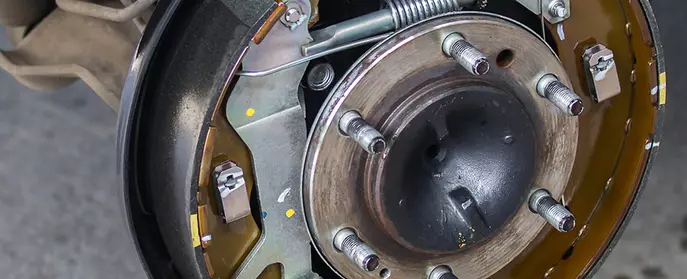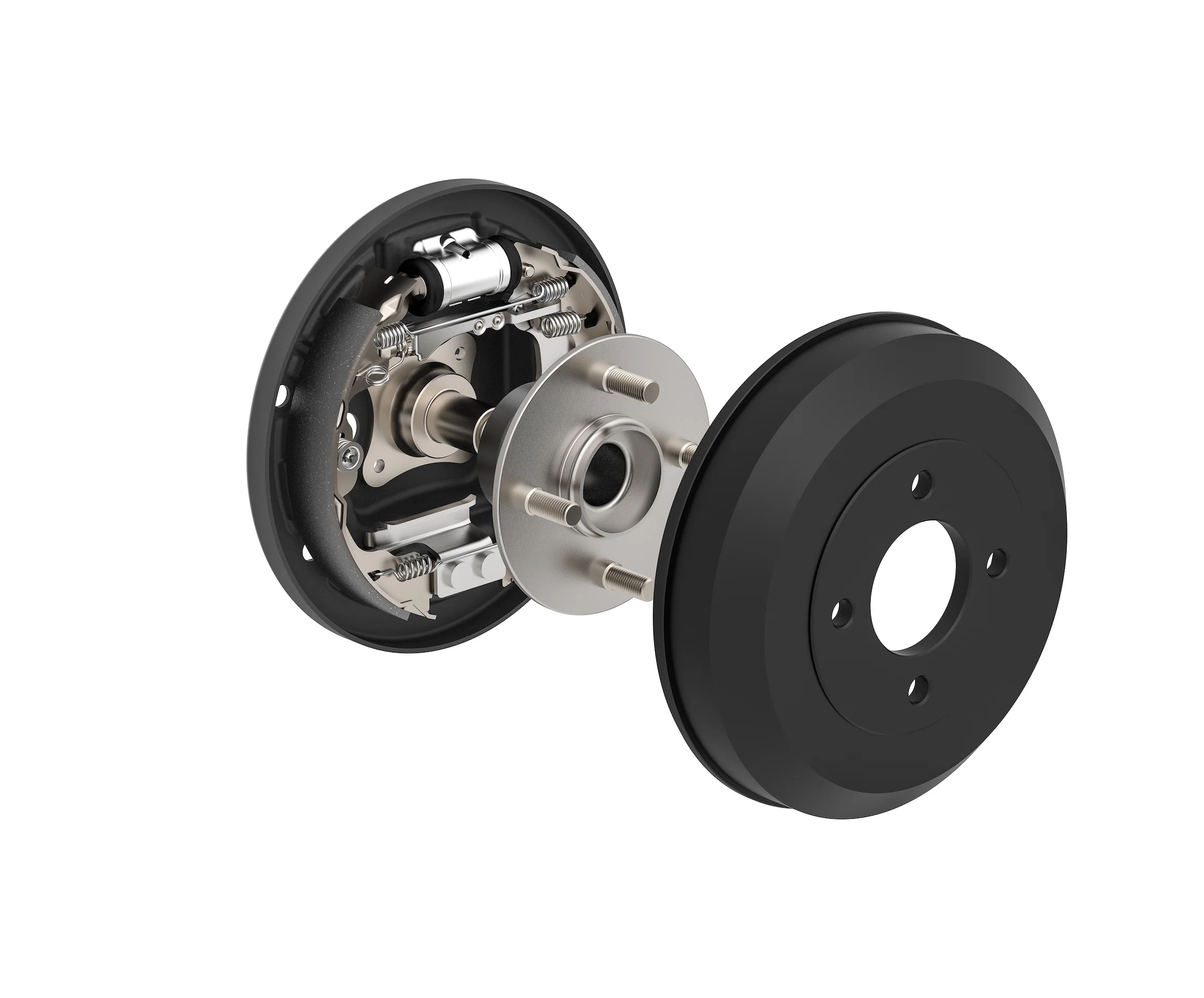Distributors must understand the technical differences between drum brakes and disc brakes to stock the right components, provide effective technical support, and ensure maximum efficiency for their workshop customers.
While disc brakes are now standard on the front axles of most modern vehicles, drum brakes are still widely used on rear axles, commercial vehicles, and heavy-duty applications due to their specific advantages.
I. Technical Comparison and Workshop Impact
The primary difference lies in how they dissipate heat and operate, which directly affects the complexity and time required for servicing in the workshop.
| Feature | Drum Brakes (Typically Rear Axle) | Disc Brakes (Typically Front Axle) | Impact on Workshop Efficiency |
| Operation | Uses shoes that push outward against a rotating drum. | Uses pads that clamp inward onto a rotating rotor (disc). | Drum Brakes require more complex reassembly of springs/hardware. |
| Heat Dissipation | Poor. Enclosed design traps heat, leading to brake fade and longer cooling times. | Excellent. Open design exposes the rotor to air, providing rapid cooling. | High heat in drums necessitates longer cooling time before service, reducing technician throughput. |
| Braking Power | Lower. Prone to fade under repeated heavy use. | Higher and more consistent, especially at high speed. | Disc brakes are the performance choice; drum brakes are suitable for load-bearing/parking roles. |
| Complexity of Service | High. Requires dismantling many small springs, pins, and levers; time-consuming adjustment is often necessary. | Low. Pad replacement is relatively simple; rotor replacement is straightforward. | Drum brakes often take 2-3 times longer to service than disc brakes. |
| Component Count | High. Requires shoes, cylinders, springs, adjusters, and a drum. | Low. Requires pads and a rotor (and the caliper assembly). | Drum brake distributors must manage a larger variety of intricate small hardware parts. |
| Self-Energization | Yes. The rotation helps force the shoe against the drum, providing an “assist” function. | No. Braking force is purely hydraulic/mechanical. | Contributes to the longevity of drum brake linings compared to disc pads. |
II. Stocking Strategy for Drum Brakes Distributors
Distributors should focus on providing high-quality kits and complete solutions to minimize complexity for the workshops.
A. Drum Brake Components
- Complete Kits are Key: Stock drum brake hardware kits that include all necessary springs, adjusters, and clips. Selling these as a unit saves the technician time searching for small parts.
- High-Quality Cylinders: The wheel cylinders are prone to leakage and failure in drum brakes. Stock quality, corrosion-resistant wheel cylinders to prevent costly comebacks.
- Bonded vs. Riveted Shoes: Ensure drum brake shoes use high-quality friction material that is either riveted or bonded securely, meeting ECE R90 standards.
B. Maximizing Workshop Efficiency Through Inventory
- Focus on Full Coverage: Since drum brakes are vehicle-specific, ensure deep coverage for popular older models and current light trucks/SUVs that still use rear drums.
- Product Segmentation: Offer “Good, Better, Best” tiers—from OE-equivalent shoes to performance-grade drums that may feature superior cooling fins or materials.
- Technical Data: Provide workshops with easy access to comprehensive technical diagrams and torque specifications for drum brake reassembly, which is critical due to their complexity.
III. Safety and Longevity Considerations
- Parking Brake Function: Drum brakes excel as integrated parking brakes, making them essential even on vehicles with rear disc brakes (using a small drum inside the disc hat). Distributors should stock quality shoes for these integrated systems.
- Contamination: Drum brakes are sealed, which protects them from road grime and contamination, leading to longer service life for the shoe material compared to exposed disc pads. This low-maintenance longevity is a key selling point for distributors.
Post Views: 220




